
In the first two rounds of soffit-to-ridge vent Wingnut testing (see Round 1 and Round 2 ), I used a simple and small easel test rig to simulate what happens in real cathedral roof assemblies that have soffit-to-ridge venting. At the end of each of those rounds, it seemed pretty clear that we needed to see how real roofs perform. In this post, I am reporting on the first Wingnut testing on real roof assemblies on four northeastern homes (all with more than one roof pitch).
How I tested
Here is a look at the procedure I followed for this round of Wingnut testing of ventilation effectiveness in cathedral roof assemblies:
- Shoot for a sunny day with as little wind as possible.
- Measure and record:
- Roof slope
- Depth of ventilation channel
- Roof surface temperature
- Air temperature and relative humidity
- Time of day
- Rig a theatrical fogger to send fog into the soffit vents.
- Access or have visibility to the ridge.
- Time how long it takes for the fog to move from soffit and come out at the ridge.
- Check to see if fog comes out anywhere other than the ridge.
- Repeat for all roof slopes available.
The test homes
Dwight Holmes Construction, Marlboro, Vt: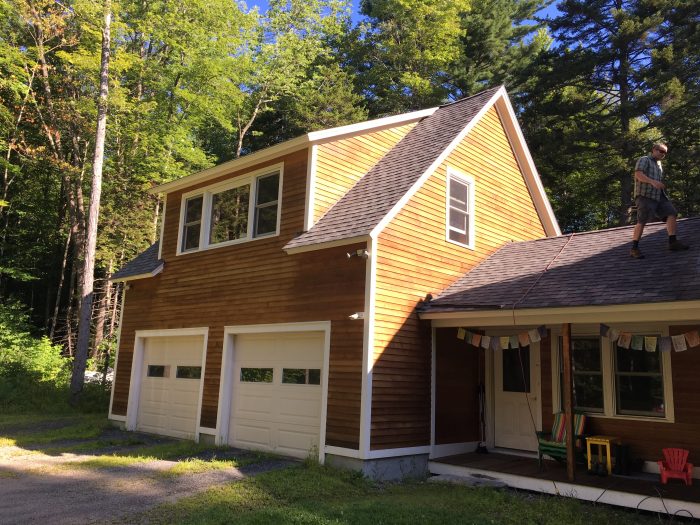
SEON member’s home in Northwestern Massachusetts: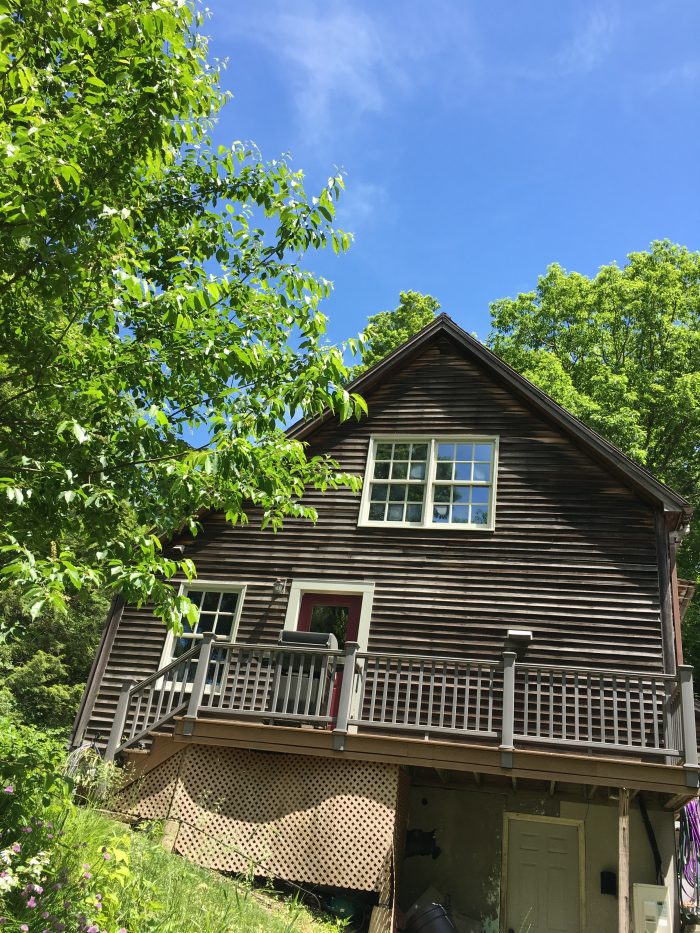
Weekly Newsletter
Get building science and energy efficiency advice, plus special offers, in your inbox.
My buddy Steve Baczek’s home in Reading, Ma:
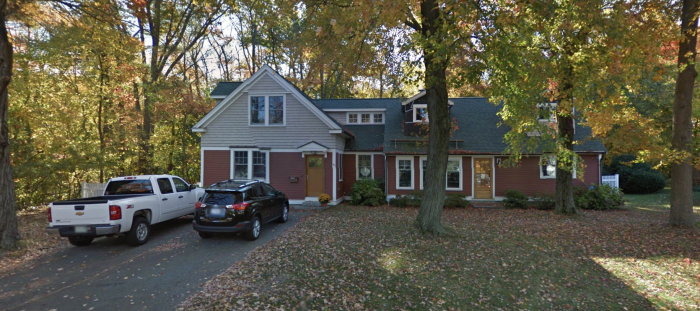
Architect Jon Sacc0ccio’s home in Brattleboro, Vt: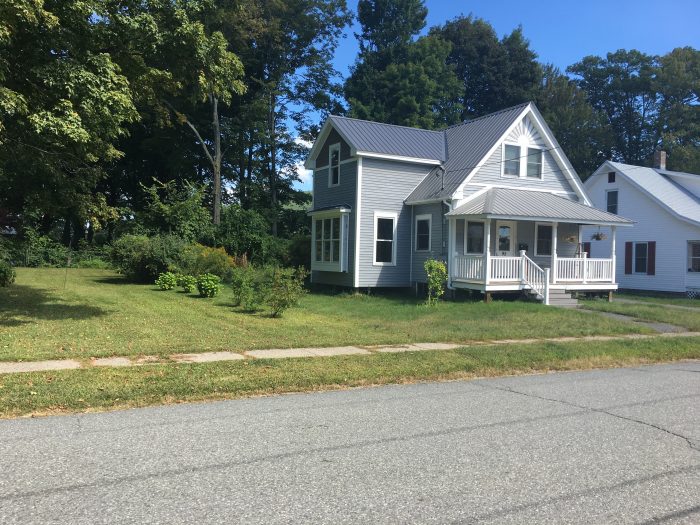
Field Test Results
The table below summarizes the test results from each home:

Now, here are the highlights from each of the tests. I know, there are 14 videos to view, each a couple of minutes or so in length. You obviously don’t have to watch them all.
Marlboro, VT: 12:12 NE roof slope. Strong vent flow from soffit to ridge. John Hunt of Holmes Construction reported some fog coming down and out the soffit on the opposite side of the roof:
Marlboro, VT: 12:12 SW roof slope on the opposite and cooler side of the same roof. There was no soffit-to-ridge flow with what seemed like back-pressure pushing the fog out of the soffit instead:
Marlboro, VT: With the 5:12 SW dormer being more strongly heated by the rising sun, slower but solid soffit to ridge flow shown here:
NW MA: Strong vent flow on 9:12 east roof slope:
NW MA: Even stronger vent flow on much warmer 9:12 west roof slope:
NW MA: Back to the 9:12 east roof slope testing the truncated vent chutes at the skylight—good flow around skylight because of the furring strips held down to allow flow:
NW MA: 9:12 west roof slope testing around lower skylight. Good flow:
NW MA: West 4:12 roof pitch connecting to 9:12 roof pitch in the shade shows weaker flow:
Reading, MA: 3:12 SE roof pitch with really hot roof surface temperature shows weak flow:
Reading, MA: SE 8:12 roof pitch has strong flow with really warm roof temperature:
Brattleboro, VT: You’ll see in the next four videos how gusty wind and small triangular attic spaces complicate testing this cathedral roof assembly clad with metal roofing:
Variables and conclusions
There were lots of variables in the field testing. In only four locations, we were able to test differences in:
-
- Ridge vent type
- Soffit vent type
- Roof pitch
- Run length
- Vent depth
This makes it a bit harder to draw conclusions than with the Wingnut demo rig used in the first two rounds of testing. Having said that, here are some thoughts:
- Roof pitch and roof temperature seem to be the dominant drivers, supporting stack effect as a very effective driving force for this type of roof ventilation.
- Holding back furring strips so that truncated vent chutes around skylights communicate with neighboring full-length soffit-to-ridge vent chutes seems to work well.
- Even in roofs with long runs, conditions can support backwards air flow from ridge to soffit.
- Vent chute depth does not appear to be as dominant a factor as roof pitch and temperature.
- Even mild wind can easily complicate or overcome stack effect as a driving force.
- This type of testing can identify cathedral ceiling air leaks (this happened on one of the test homes) so make sure you have access to the home’s interior and best to disable top-floor smoke alarms before testing.
What’s next?
I want to test more cathedral roofs and in colder conditions. I also am very interested in testing hip and valley cathedral roofs where roof furring strips have been configured to allow truncated vent chutes to communicate with adjacent full chutes.
What Wingnut field testing would you like to see?
-Peter Yost is GBA’s technical director. He is also the founder of a consulting company in Brattleboro, Vermont, called Building-Wright. He routinely consults on the design and construction of both new homes and retrofit projects. He has been building, researching, teaching, writing, and consulting on high-performance homes for more than twenty years, and he’s been recognized as NAHB Educator of the Year. Do you have a building science puzzle? Contact Pete here. Photos and videos courtesy of the author.





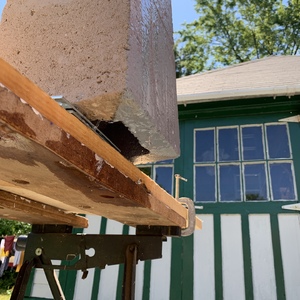
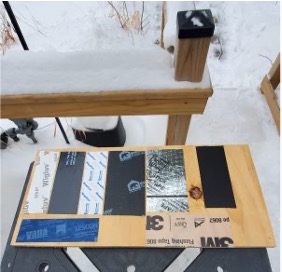









11 Comments
Peter,
I would like to see testing that would confirm that the stack effect can draw a partial vacuum in the insulation cavity of a cathedral ceiling that is capable of drawing in air from small leaks from the living space.
I guess you could close off the soffit vents and heat the insulation cavity with open ridge vents. Then maybe also take measurements of the cavity pressure as the soffit vents are changed to different amounts of open/close.
Wind being the dominant driver and it being able to easily reverse stack effect is consistent with other research. It's not clear how one acts on this to improve ventilation.
> Vent chute depth does not appear to be as dominant a factor as roof pitch and temperature.
Depth will have no effect on direction of flow. But it does have a big effect on flow rate for a given pressure. So keep using 1.5+" gaps where code only requires 1". Don't use a very limited amount of data with no controls (especially wind) to conclude otherwise.
I wonder if there would be any value in tracking AHU impact on roof deck ventilation, for buildings with leaky envelopes and duct systems.
I would love to see bumpy wrb, HYDROGAP, etc. AND 1/4,1/2,3/4 thick rainscreen furring flow tested to see what happens.
ALSO, it would be awesome to see what rainscreen connected to baffles would do. Im GUESSING that with sun on side wall and roof it would flow rapidly with and increase in temperature.
The top down flow surprised me, i honestly never would've thought that would happen.
I love the headgear! Thanks for this interesting article! Obviously took a lot of time and effort. I definitely would've thought depth would be a bigger factor. Interesting stuff
I find it interesting that the 3/4 and 1 1/2 gaps performed similarly. I had suspected as much while many pushed that a larger gap was necessary.
Gotta get me one of those hats
Where can I get helmut like that.
I have not bought one in a while but it's actually a Detroit Red Wings hat; try here:
https://www.hatonlineshop.com/detroit-red-wings-wingnut-hat_list
I think I paid about $25 but that was at least 4 years ago.
Peter
I'm assuming cathedral roof assemblies = cathedral ceiling. I would also like to see ceiling temp recorded in addition to roof temp to get a better idea of radiated heat into the living space. I'd also be interested in how some adjacent houses (with a conventional flat ceiling but soffit/ridge ventilation) performed compared to the cathedral. I suspect that conventional ventilation/attic setups do not perform any where near as well as anticipated (in either air flow or temperature reduction), allowing a great deal of radiation into the attic space and increasing the deltaT between the attic and living space below. I have been experimenting in my own home (much older construction with only ridge and window attic ventilation) for a couple years. I've been installing a variety of products to create a chase under the roofing deck (which would be similar to a cathedral) from a low-level intake up to the ridge vent in order to create a hot air space within the chase - increasing airflow - and reducing roof deck radiation into the attic, lowering the attic temps to as close as ambient as possible. Can't really do much to improve a cathedral ceiling without a huge investment, but many more conventional roofs already built that need all the retrofit help they can get.
Any links to the fogger? Great work.
The fogger I have is a Chauvet DJ Hurricane; try this guide, since they can vary quite a bit in price, but the one I have was about $140 and so far has worked well.
https://lightsguide.com/best-fog-machines/
Peter
Log in or create an account to post a comment.
Sign up Log in